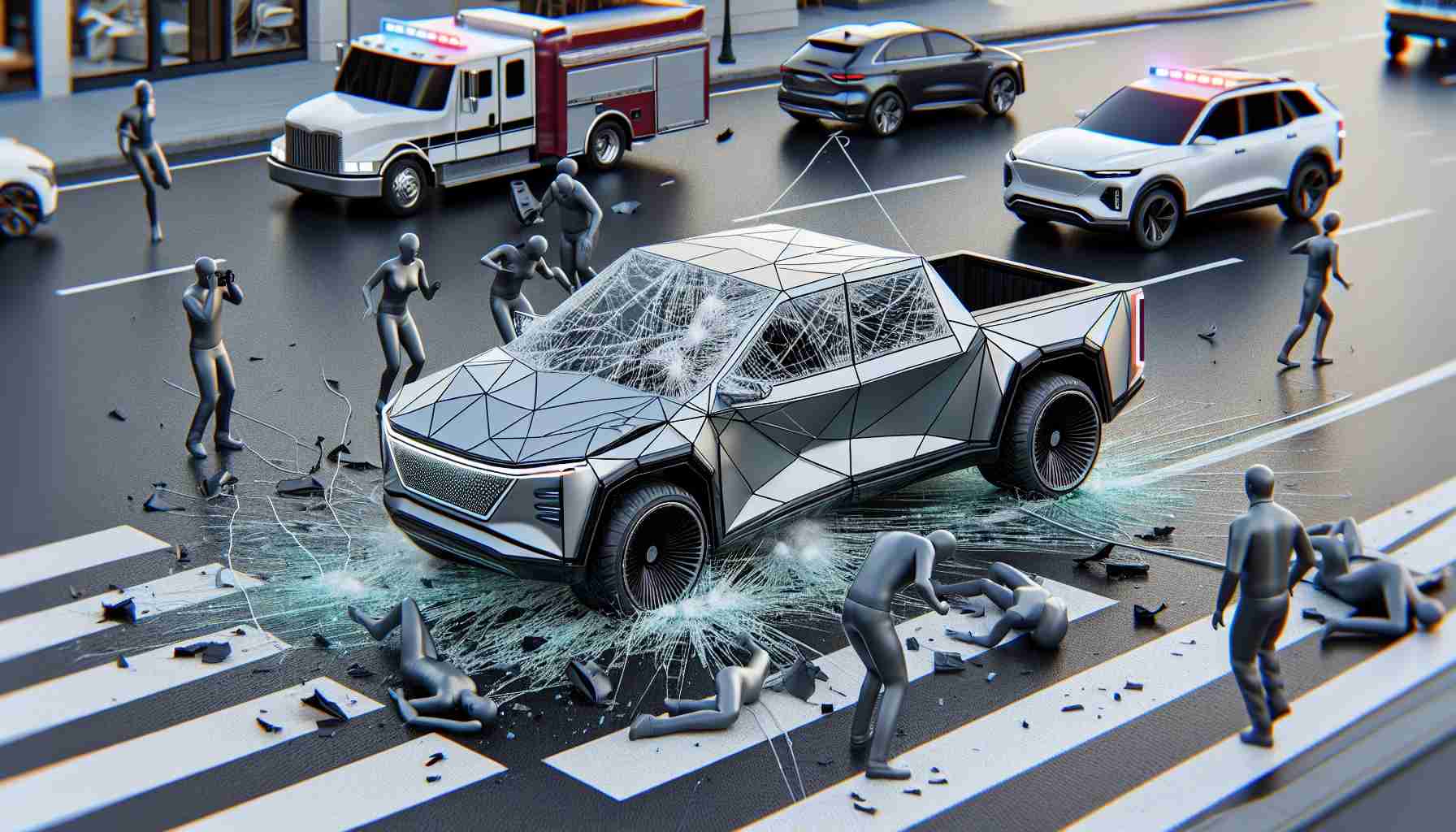- A Tesla Cybertruck owner crashed while using the Full Self-Driving system, highlighting risks of automated driving technologies.
- The incident occurred when the vehicle failed to merge properly, resulting in a collision with a light pole.
- The driver emphasized the importance of maintaining vigilance, even when using advanced technology.
- Elon Musk promotes Full Self-Driving as the future, but this event raises concerns about its current reliability.
- The key takeaway is the necessity of human oversight in automated driving.
- All Tesla drivers should remain attentive to ensure safety on the road.
In a startling incident that has captivated the internet, a Tesla Cybertruck owner crashed into a pole while using the car’s Full Self-Driving (FSD) system. The driver, a software developer from Florida, found himself in a shocking predicament when the cutting-edge technology failed to merge properly, leading to a collision.
As he recounted the experience, the Cybertruck was on cruise control, veering dangerously close to a curb. Despite his faith in the advanced driving features, the vehicle didn’t adjust its path. In a split second, the car struck a curb and collided with a nearby light pole, yet miraculously, the driver emerged unscathed.
This incident, shared widely online, serves as a stark reminder of the risks associated with relying on automated driving technologies. Although Tesla markets FSD as “on the verge of becoming truly self-driving,” this mishap highlights the necessity of driver vigilance. The unfortunate driver stressed the importance of staying alert, declaring that it’s easy to become complacent when using such advanced technology.
Elon Musk has long touted FSD as the future of driving, but incidents like this raise questions about its current reliability and safety. As the industry pushes the boundaries of automation, one crucial takeaway stands out: never underestimate the need for human oversight, even in the age of innovative driving systems.
Take note, Tesla drivers! Your attention is the key to safety on the road.
Shocking Tesla Cybertruck Crash: Lessons on Autonomy and Safety
Understanding Autonomous Driving Risks and Responsibilities
In a recent incident involving a Tesla Cybertruck operating under the Full Self-Driving (FSD) mode, the vehicle crashed into a pole after failing to merge properly. This accident has sparked discussions about the reliability of autonomous driving technologies and the essential role of driver vigilance.
Specifications of Full Self-Driving (FSD): Tesla’s FSD includes features like auto-lane changes, traffic-aware cruise control, and the ability to navigate on highways. However, the system is not fully autonomous (Level 5) but rather classified as Level 2. This means that while the car can assist in driving tasks, the driver is still responsible for vehicle operation.
Trends in Autonomous Vehicle Technology: The automotive industry is increasingly investing in advanced driver-assistance systems, with several companies vying for dominance. Predictions suggest that as technology improves, we may see more fully autonomous vehicles on the road by 2030. However, safety incidents like the Cybertruck crash bring attention to the challenges this innovation faces.
Pros and Cons of Tesla’s FSD:
– Pros:
– Advanced navigation capabilities.
– Continued software updates that improve the system over time.
– Enhanced driver comfort on long journeys with cruise control features.
– Cons:
– Dependence on the driver to remain alert at all times.
– Occasional misinterpretation of road conditions, leading to accidents.
– Current regulations that limit full autonomy.
Key Questions Related to the Incident
1. What are the safety measures Tesla has in place for FSD?
Tesla incorporates numerous safety protocols within its FSD, including driver monitoring that requires the driver to keep their hands on the steering wheel and pay attention to the road. If the system detects inattention, it prompts the driver to regain control.
2. What is the legal framework for FSD technology usage?
FSD isillegal in many jurisdictions for fully autonomous operation. The technology is still being tested and must adhere to local regulations, which vary greatly. Ultimately, drivers must follow the laws set forth by their regions when using such systems.
3. How does FSD compare to other autonomous driving systems on the market?
Other companies, such as Waymo and Cruise, offer varying levels of autonomous driving and testing. Waymo’s technology is at Level 4 in designated areas, allowing for more autonomy compared to Tesla’s Level 2. However, the geographic and operational limitations can be a significant trade-off.
Conclusion
The incident involving the Tesla Cybertruck serves as a critical reminder of the imperfections in autonomous driving technology and the importance of responsible driver behavior. As the future of driving technology unfolds, continuous improvements, along with stringent regulatory standards, will be crucial for enhancing safety on the roads.
For more insightful resources, visit Tesla.
